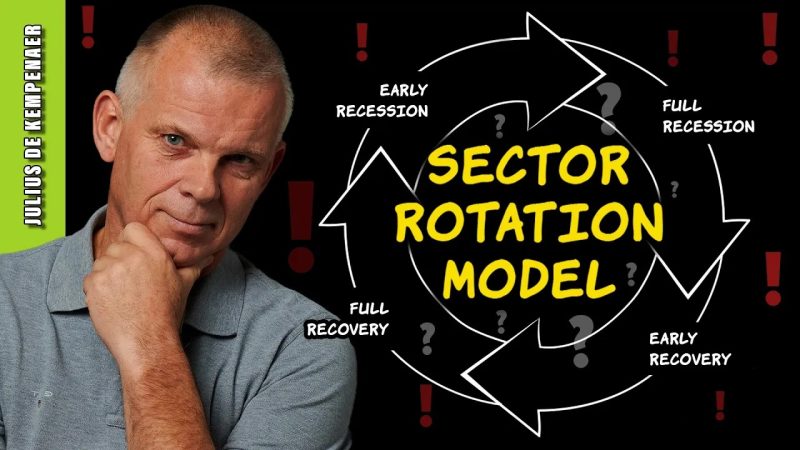Sector Rotation Model, a key tool for tactical asset allocation in financial markets, has recently been flashing warning signals. This methodology, employed by savvy investors and financial managers worldwide, may offer insights that we can’t ignore, particularly in uncertain economic climates. But before we delve into these warning signals, it’s essential to understand the basics of the Sector Rotation Model.
The Sector Rotation Model hinges upon the economic cycle’s cyclical nature. It suggests that distinct sectors of the economy perform better at different stages of the economic cycle. Thus, understanding these stages and their aligned sectors is foundational in effectively responding to the model’s aforementioned warning signals.
The economic cycle consists of four critical stages: recovery, expansion, slowdown, and recession. Traditionally, sectors such as consumer discretionary and real estate perform best during the recovery phase. In contrast, industries such as technology and industrials often outpace others during expansion. When the economy begins to slow down, sectors like health care and consumer staples often become the favorable choice. Finally, utilities and other defensive sectors tend to shine amidst a recession.
So, what does it mean when the Sector Rotation Model starts flashing warning signals, and how can investors interpret and act upon them with prudence?
When a shift is detected towards sectors that usually thrive in economic slowdowns or recessions, it is a potential warning signal. This may imply that the economy is wavering and possibly heading towards a downturn. Recently, the model has indicated an increased traction in defensive sectors such as utilities, consumer staples, and health care; a classic cautionary flag of economic downturn.
But this does not necessarily mean an impending doom. According to stock market historians, sector rotations are not always predictors of a full-blown recession but rather indicate an impending stock market correction. In response to these warning signals, investors might consider reallocating their portfolio to take advantage of under-performing sectors’ potential returns. For instance, investing more in defensive sectors such as utilities or consumer staples could reduce portfolio risk if an economic downturn was truly on the horizon.
However, it’s important to remember that the Sector Rotation Model is just one piece of the investment puzzle. Other factors such as the state of the global economy, corporate earnings, inflation, and interest rates also contribute to the overall market direction.
When the Sector Rotation Model flashes a warning signal, it’s a reminder for investors to scrutinize their portfolios, assess potential risks, and perhaps make necessary reallocations in response to shifting economic conditions. However, it is not an automatic call to action. Care and consideration should always factor in, as with any decision regarding investing and finance.
An essential practice while incorporating this model into investment strategies is to understand it thoroughly, beyond just the warning signals. Recognizing the model’s limitations and ensuring its complement with other investment strategies could offer better environment analysis and make investing a less risky activity.
Finally, whether the economy is in recovery or facing a recession, the golden rule is that the stock market is inherently unpredictable. No single model can guarantee foolproof predictions. While the Sector Rotation Model flashing warning signals may be cause for pause and consideration, it should not incite panic. The way forward depends on many factors, not least of which is thorough market research, careful analysis, and considered decision-making.




